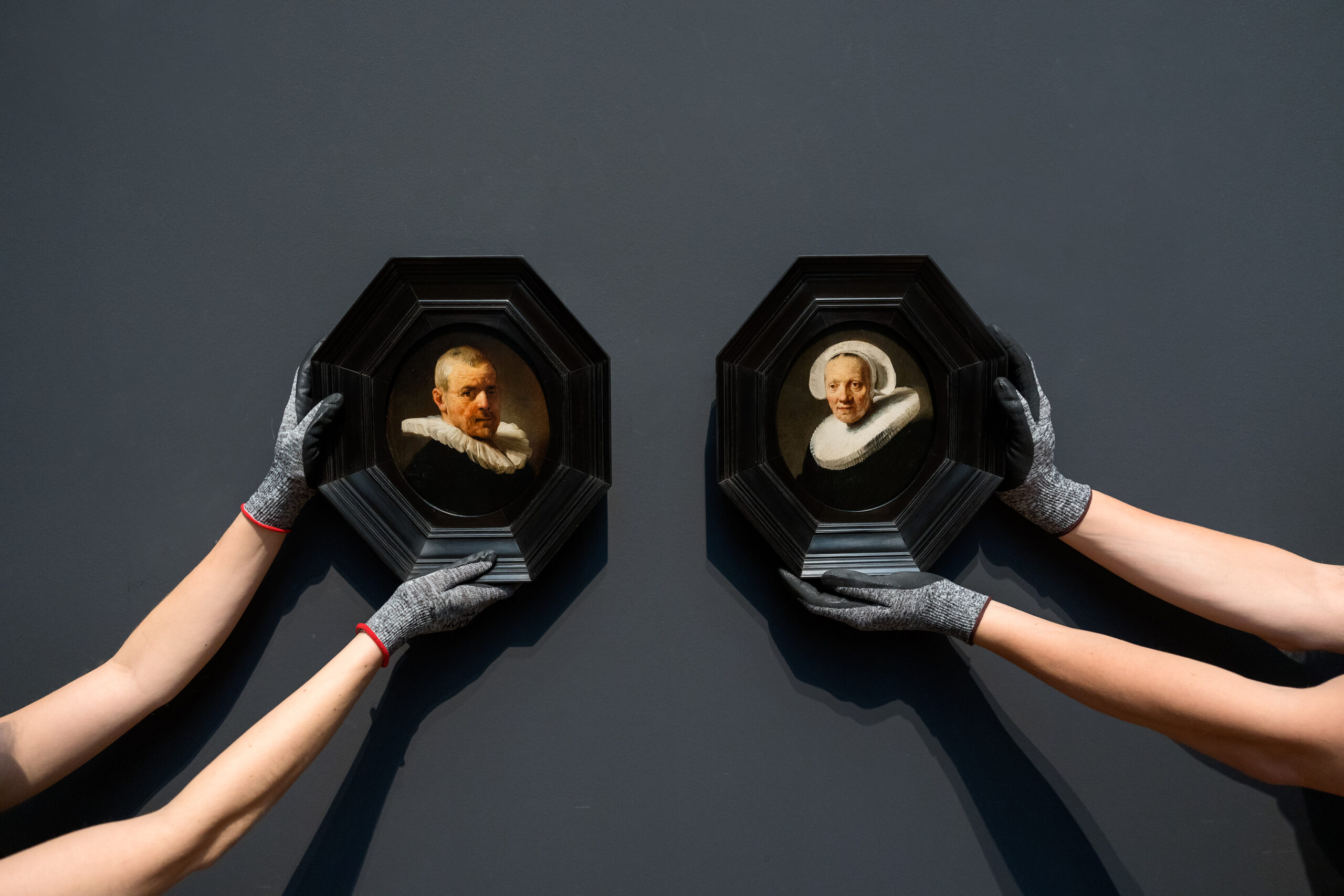
Many first-time visitors to the Louvre experience a letdown to discover how small the Mona Lisa is -just 21” x 30”.
Meanwhile, over in Amsterdam, visitors have been flocking to the Rijksmuseum, eager to lay eyes on the two smallest formal works in the museum’s collection.
Measuring slightly less than 8” tall, they are about as tall as the average retail banana as per US Department of Agriculture estimates.
It’s not just the matching oval portraits’ size that’s packing ’em in.
The recently rediscovered paintings have been identified as the work of Rembrandt Harmenszoon van Rijn, the leading artist of the Dutch Golden Age.
Painted in 1635, the portraits feature Jan Willemsz van der Pluym, a wealthy 17th-century plumber and his wife, Jaapgen Caerlsdr, dressed in black with stiff white ruffs. The couple owned the garden next to the painter’s mother, and he was distantly related to them through a marriage on her side.

Their triple-great-grandchildren put the portraits up for auction in 1760, after which they passed through several private collections, before dropping entirely from public view following an auction in the summer of 1824.
Nearly two hundred years later, Jan and Jaapgen’s portraits weren’t making much of an impression on that winning bidder’s descendants.
As Henry Pettifer, an Old Master Paintings specialist at Christies, which conducted both the 1824 auction and the one last summer, where the portraits fetched 14.3 million dollars, told the Washington Post, “the family liked the pictures but were never certain that they were by Rembrandt and never really looked into that:”
The pictures were completely absent from the Rembrandt literature in the 19th and 20th centuries, which was extraordinary. They have intimacy about them, a dignity. They’re extraordinary… They’re unlike some of his grand, formal commissioned portraits, and they are something much more spontaneous and intimate. I think the reason for that is that the sitters were very closely connected to Rembrandt. They were very much from Rembrandt’s own inner circle. We should regard them as personal documents rather than formal commissions.

The most recent winning bidder is committed to keeping the paintings in the public eye with a long term-loan to the Rijksmuseum, where extensive research using X‑radiography, infrared photography, infrared reflectography, macro X‑ray fluorescence, stereomicroscopy and paint sample analysis confirmed their provenance.
Experts have also noted similarities in composition, color, and painting technique between these works and larger portraits Rembrandt executed during the same period.
Jonathan Bikker, the Rijksmuseum’s curator of 17th-century Dutch painting, describes the verification of provenance as “mindblowing:”
Totally unknown works hardly ever happen. We really wanted to be able to show them.
Related Content
300+ Etchings by Rembrandt Now Free Online, Thanks to the Morgan Library & Museum
The Rembrandt Book Bracelet: Behold a Functional Bracelet Featuring 1400 Rembrandt Drawings
– Ayun Halliday is the Chief Primatologist of the East Village Inky zine and author, most recently, of Creative, Not Famous: The Small Potato Manifesto and Creative, Not Famous Activity Book. Follow her @AyunHalliday.


Leave a Reply